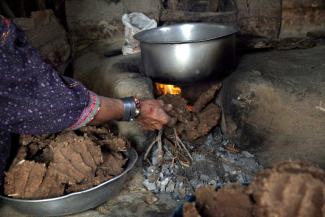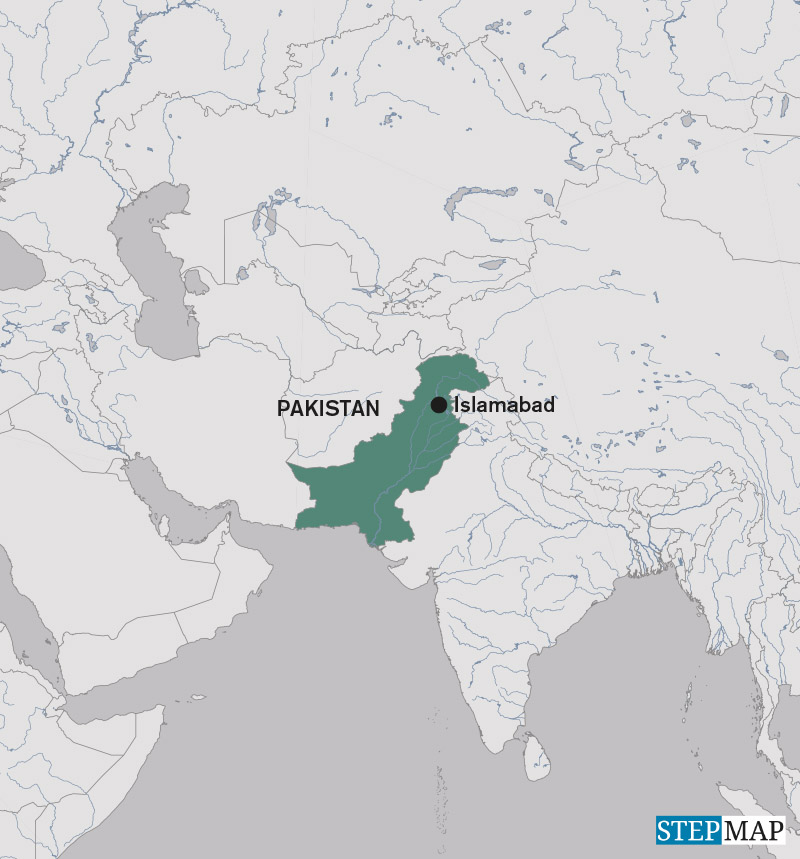Gender disparities
South Asian gender disparities get worse in economic crises

Pakistan is in the midst of a severe economic crisis. Recent unprecedented floods have compounded serious pre-existing problems (see box). The situation is desperate – especially for women and girls.
Esther Duflo, the Nobel Prize-winning economist, is among those who have studied gender patterns in the impacts of economic crises. In a journal article of 2012, she reported serious divergence in the nutrition of girls and boys during economic crises. Moreover, she showed that, in some parts of the world, the excess mortality of girls relative to boys spikes during droughts, which may cause economic crises in countries where agriculture is an important sector.
Duflo also noted that female infants were twice more likely than male infants to die of diarrhoea in poor parts of New Delhi. In a similar research effort Sonia Bhalotra (2019), an economist at the University of Bristol, showed that infant mortality of girls in rural Indian households correlates negatively with economic growth. It goes down when the economy is strong, but goes up in recessions. No such research has been done in Pakistan, but South Asian cultures are so similar that we must expect the mortality rate of girls to increase disproportionately in the current economic disaster.
Missing women and girls
Downturns thus contribute to the phenomenon of “missing women”, that Amartya Sen spelled out in the British Medical Journal in 1993. He compared sex ratios at birth to the sex ratios in the population of several countries. The result was that the female populations of a number of particularly male-dominated countries, including China, India and Pakistan, were several tens of millions too small. According to Sen the causes were that
- many female infants and girls died prematurely due to negligence, while a greater number of boys in their age group survive, and
- many women of reproductive age died due to inadequate health care, in particular in the context of giving birth.
This kind of disparity is a shocking manifestation of structural gender inequality. The current crisis will aggravate things in Pakistan, where maternal mortality is normally high, with 140 deaths per 100,000 live births. The flood-induced loss of infrastructure will compound problems, especially as the cash-strapped government cannot plug gaps. In September, the UN Population Fund (UNFPA) estimated that over 650,000 pregnant women needed or would need maternal and reproductive health care in Pakistan’s flood-affected areas.
Other gender-specific health risks are getting worse too. When incomes decline, households cut back on healthy and nutritious foods. Male family members, however, tend to eat first, so women and girls only get their leftovers – which means their diets become increasingly unbalanced.
Lacking access to clean energy, moreover, leads to yet more women being exposed to toxic indoor pollution when cooking with dirty fuels such as wood or dried cow dung. A study of rural and urban households in India showed that rates of coughing were up to 60 % higher among women who used those fuels. Clean energy – electric power and natural gas, for example – is more expensive, so households often switch to dirtier options during crises. Infrastructure damages, moreover, have reduced access in some places.
Boys are preferred
In 2002, Sen updated the number of missing women and girls in another short essay in the same journal. He now reckoned that about 100 million women and girls were missing from the countries concerned. This time, he added another cause: sex-selective abortions that deny life to female foetuses. Sex-selective abortions are common in countries with a strong preference for male children.
In India and Pakistan, one driver of this depressing trend is that parents expect their sons to take care of them in old age, whereas daughters will marry, join another family and thus not be of help. Poor people, of course, cannot afford abortions, but there is an equally disturbing pattern of girls being abandoned. That happens especially when times get tough. Bilquis Edhi was the founder of Pakistan’s largest charitable organisation that takes care of abandoned children in Pakistan. She observed that 95 % of children left in the Edhi Foundation’s cradles were girls, and poverty was the main reason why families could not take care of them.
Education is another field in which girls are disadvantaged. Parents typically invest more in their son’s schooling, but hardly worry about their daughters academic achievements (see Mahwish Gul on www.dandc.eu).
As is true of girls’ mortality, this trend gains force in times of crisis. Data from rural Pakistan show that when households slide into poverty due to an external shock, girls drop out of school first. We must therefore expect the current crisis to have that consequence for many girls. This one-time shock will have long-term impacts. After all, poorer education results in fewer and less attractive job opportunities. Female empowerment, however, depends on education and employment (see my contribution to www.dandc.eu).
In Pakistan’s informal sector, women are indeed over-represented. The implication is that they cannot expect subsidies or insurance payouts to support them when they lose their jobs in times of crisis (see Marva Khan on www.dandc.eu).
Crime, violence and abandonment
In economic crises, moreover, crime and violence tend to increase. Data on crimes against property in the province of Sindh shows a sharp increase in at least five categories from January to July 2022. These categories include robbery, burglary, motorcycle snatching and theft. This rise probably has many reasons, but the economic situation is certainly one of them.
Moreover, psychological distress due to lost incomes and rising prices often results in domestic violence. Women and girls are the main victims. An important driver is psychological distress due to loss of income and livelihoods on the one hand and the rising cost of living on the other. As scarce economic opportunities become even scarcer in downturns, women’s ability to walk away from violent situations at home is reduced too.
References
Bhalotra, S., 2010: Fatal fluctuations? Cyclicality in infant mortality in India. Journal of Development Economics, 93(1), 7-19.
https://www.sciencedirect.com/science/article/abs/pii/S0304387809000388
An earlier version (2007) is freely available at: https://d-nb.info/986000647/34
Duflo, E., 2012: Women empowerment and economic development. Journal of Economic literature, 50(4), 1051-79.
https://www.aeaweb.org/articles?id=10.1257/jel.50.4.1051
Maji, P., Mehrabi, Z., and Kandlikar, M., 2021: Incomplete transitions to clean household energy reinforce gender inequality by lowering women’s respiratory health and household labour productivity. World Development, 139, 105309.
https://ideas.repec.org/a/eee/wdevel/v139y2021ics0305750x20304368.html
Sen, A., 1992: Missing women. BMJ: British Medical Journal, 304(6827), 587.
https://www.ncbi.nlm.nih.gov/pmc/articles/PMC1881324/
Sen, A., 2003: Missing women — revisited. BMJ, 327(7427), 1297-1298.
https://www.ncbi.nlm.nih.gov/pmc/articles/PMC286281/
Sundus Saleemi is a senior researcher at the Center for Development Research (ZEF) of Bonn University.
sundus.saleemi@gmail.com














